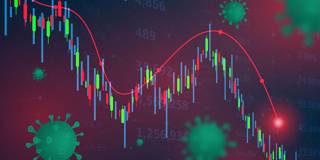In a fast-evolving crisis like a pandemic, GDP and other conventional economic metrics are simply too slow to be useful for policymakers who need to make decisions about when to lock down and reopen parts of the economy. Fortunately, real-time mobility data has opened a window into the world that COVID-19 has wrought.
HANGZHOU/MILAN – COVID-19 is an unprecedented challenge for human society and the global economy. The pandemic has already taken more than 360,000 lives worldwide, and inflicted massive negative shocks on incomes, output, and employment. The challenge for policymakers is to strike a proper balance between containing the virus and creating the conditions for economic recovery.
That is no easy task. While key measures such as testing, contact tracing, and social distancing happen to align well with both overarching goals, measuring real-time progress in each dimension is difficult. Direct measures like GDP tend to arrive with a significant lag, which makes it harder to determine when to reopen various economic sectors and activities.
The Mobility Window
Fortunately, there is an immediately observable, high-frequency indicator of COVID-19’s economic impact: mobility data, which can serve as a proxy for the broader contraction in economic activity around the globe. Following this insight, we have calculated mobility on the basis of aggregated, anonymized data published by Google, Apple, AMAP, and Baidu.

HANGZHOU/MILAN – COVID-19 is an unprecedented challenge for human society and the global economy. The pandemic has already taken more than 360,000 lives worldwide, and inflicted massive negative shocks on incomes, output, and employment. The challenge for policymakers is to strike a proper balance between containing the virus and creating the conditions for economic recovery.
That is no easy task. While key measures such as testing, contact tracing, and social distancing happen to align well with both overarching goals, measuring real-time progress in each dimension is difficult. Direct measures like GDP tend to arrive with a significant lag, which makes it harder to determine when to reopen various economic sectors and activities.
The Mobility Window
Fortunately, there is an immediately observable, high-frequency indicator of COVID-19’s economic impact: mobility data, which can serve as a proxy for the broader contraction in economic activity around the globe. Following this insight, we have calculated mobility on the basis of aggregated, anonymized data published by Google, Apple, AMAP, and Baidu.